Today, it remains a prominent attraction in the small hamlet of Al Shahaniya, home of Qatar’s popular camel racetrack. At the Al Shahaniya racetrack, an hour’s drive from downtown Doha, visitors can view the fiercely competitive and highly expensive domestic and international tournaments.
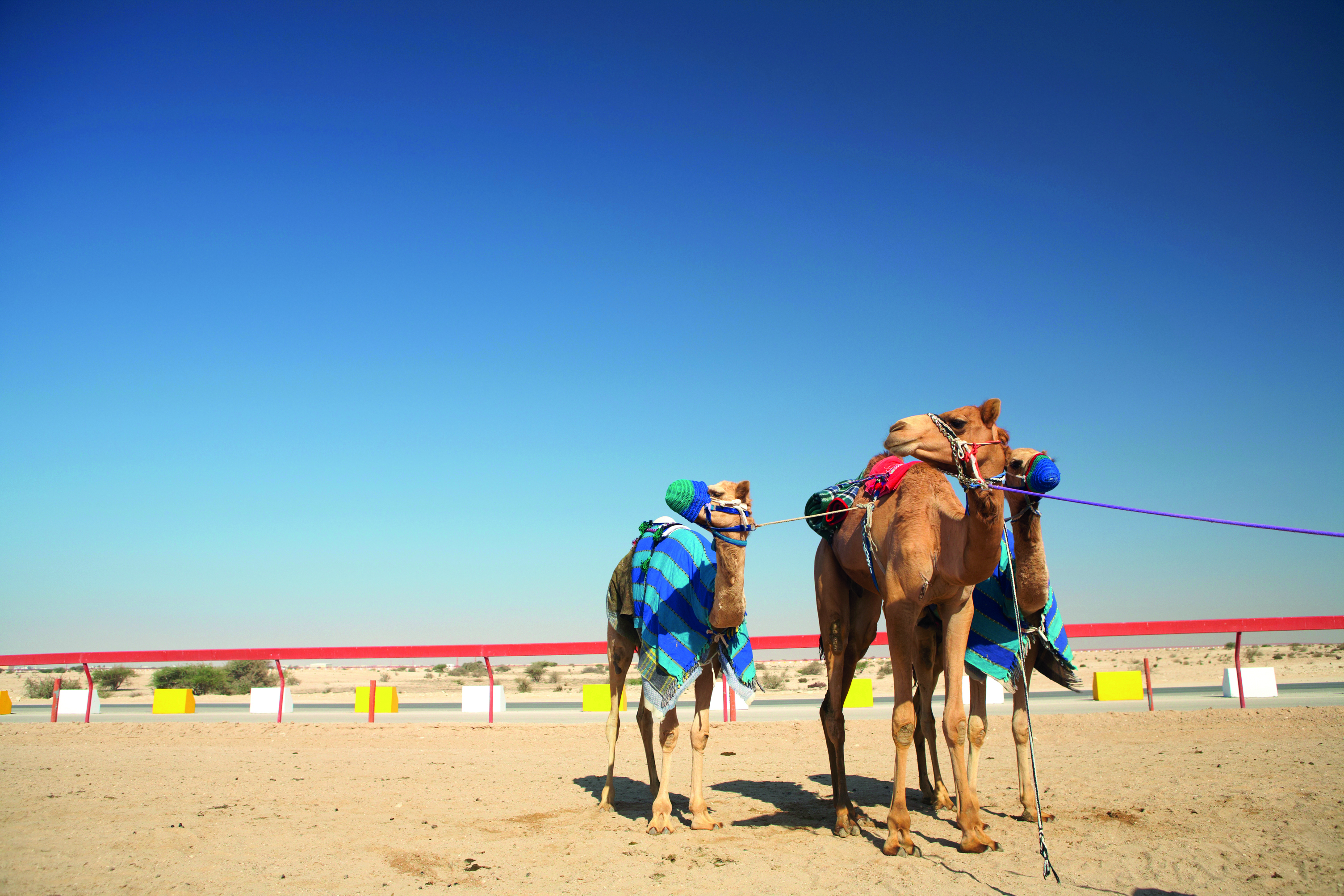
But the tradition has evolved. Now, remote-controlled jockeys direct the camels on the course in a unique clash of modern and ancient sport. The small robot jockeys are clothed in colourful racing silks, riding the creatures across the sands to the delight of locals and tourists alike.
The regular flow of camels to and from the track during the race season doesn’t quite compare to the more than 6,000 camels that participated in the Al Shahaniya Festival last year. Prizes included golden and silver daggers, with the sword of His Highness the Emir awarded to the winner of the final event: His Highness the Emir’s Main Race.
Although professional camel racing started in Qatar in 1972, the sport is a pillar of tradition, and the racetrack is a must-see for any visitor to Doha.
Did you know?
Racing camels can reach speeds of up to 40 mph.
Tell us about your current position at ROTA?
I first joined ROTA in 2009 and serve as the programme’s Executive Director. My principal professional endeavour is implementing the strategic course set by our leadership. During this tenure, I have led a variety of initiatives in 15 countries across Asia and MENA, including Indonesia, Pakistan, Nepal, Palestine, and Lebanon, as well as in Qatar itself. These projects typically involve educational leadership and teacher training, as well as sports, environmental and skills development.
What is your favourite part of the job?
Being part of ROTA’s working environment is truly an exceptional experience in itself. Working on a daily basis with a dedicated passionate team really enriches the professional journey, and instils a sense of confidence that we can overcome any potential challenge together. Also, the diversity of our projects, partners, and beneficiaries brings a sense of excitement and helps avoids routine.
What has been your most challenging moment at ROTA?
The bombing of our schools in Gaza was without doubt one of the most traumatic and challenging moments. Yet it is also an example of our resilience, and how we can transform a sad event into a success story. The children’s incredible enthusiasm to continue attending school, despite the severe damage, inspired us to rebuild in record time, and the project is now fully functioning again. ROTA has worked hard to rehabilitate the educational environment in Gaza since 2014, and is determined to continue these efforts to ensure children in the Strip receive the education they deserve.
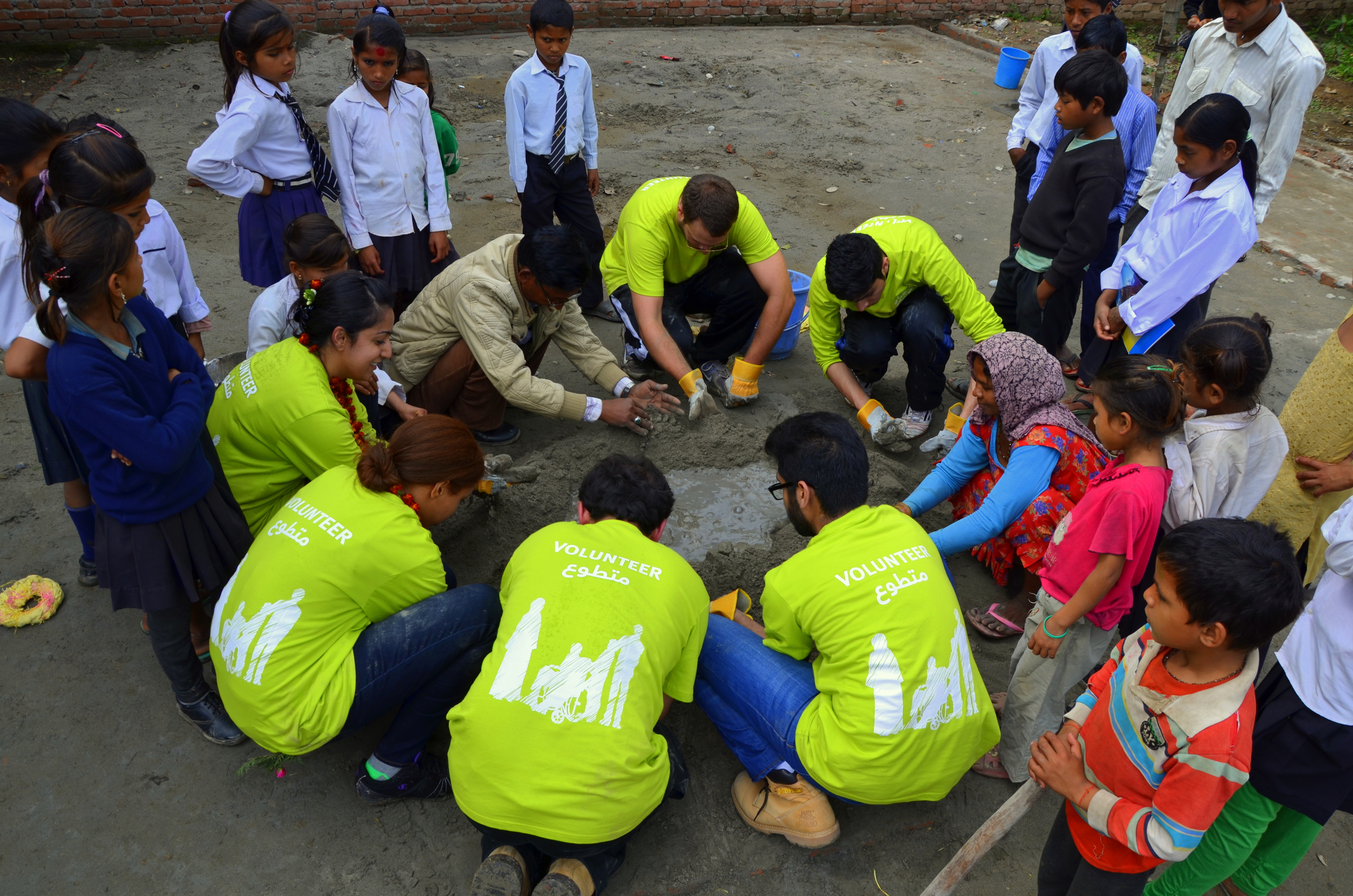
What ROTA initiative have you been most inspired by?
The Al Koora Art Project was a concept developed by ROTA’s Volunteer Programme that connected children with special needs with a collective of young aspiring Qatari artists. To celebrate Qatar’s successful 2022 World Cup bid, the children and artists created works of art that represented different elements of Qatar, its people, and its natural environment in the past, present and future. These works of art were then auctioned at ROTA’s 2011 Gala Dinner, raising a phenomenal USD 1.5 million, which went on to fund numerous educational initiatives across Asia. Today, the Al Koora pieces are on show at Hamad International Airport alongside artwork by internationally-acclaimed artists.
How has ROTA benefitted from joining Education Above All (EAA) Foundation?
From my perspective, the added value has been two-fold. By merging with EAA, we have gained tremendously from the patronage and leadership of Her Highness Sheikha Moza bint Nasser, Founder and Chairperson of Education Above All Foundation. Beyond this, we see a two-way experience-sharing benefit: ROTA has learnt from EAA’s extensive experience and best practice, while EAA has brought to the table its own pool of knowledge on increasing access to quality education, youth empowerment, and the value of strong community engagement.
For Dr Asmaa E Al Fadala, the field of education has always been one that requires a local understanding and a global outlook. In her pursuit of educational reform, her career path has transitioned from being a physics teacher in Qatar; a science coordinator following her acquisition of a Master’s degree; to joining the RAND Policy Institute, focusing on educational research.
At Cambridge University, Dr Al Fadala explored case studies of schools in Qatar impacted by educational reform. The research earned her a PhD in Educational Leadership. Afterwards, she joined the World Innovation Summit for Education (WISE), an international initiative aimed at transforming education through innovation. Today, she is Director of Research at WISE, focusing on promoting innovation in education across three ‘pillars.’
“The first pillar that we focus on requires us to collaborate with renowned institutions around the world, and produce policy-relevant research on a wide range of educational topics,” she explains. “Secondly, we have programmes that recognize and actively facilitate innovation in education. Lastly, we promote innovation in education through our advocacy work, as we participate in different forums around the world.
“Our most significant achievement has been that we succeeded in putting education on the global agenda. That was very much part of Her Highness’s vision following her establishment of WISE in 2009.”
– Dr Asmaa E Al Fadala
Founded by Her Highness Sheikha Moza bint Nasser as a global initiative under the umbrella of Qatar Foundation, WISE hosts a biennial WISE Summit. The conference brings together over 1,500 worldwide experts, researchers, and innovators to form new collaborations and develop solutions to inspire creative changes in education. In her role as Director of Research, Dr Asmaa E Al Fadala is central to the success of the project and to WISE’s international outreach.
“Working at WISE has taken my work a step further to reach global platforms,” she says. “For example, I have been invited to serve as an advisory member of the Asia-Pacific Economic Cooperation, working on a new education strategy for the region. This has given me the opportunity not only to make my voice heard within WISE and Qatar, but also on an international level.”
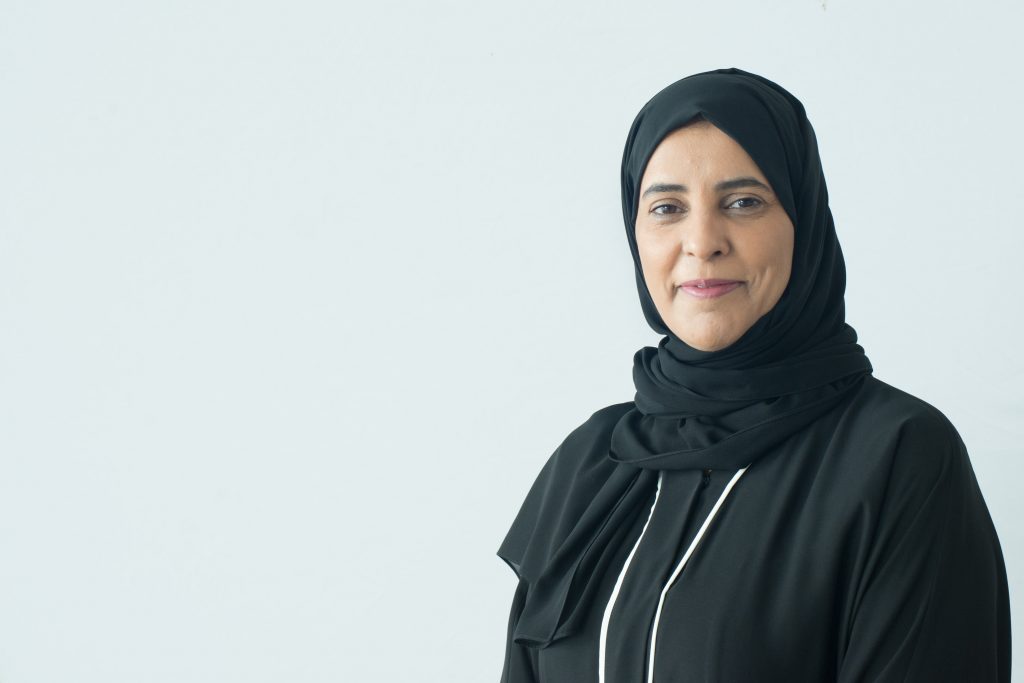
Dr Al Fadala’s work is necessarily global, but also local, which allows her to incorporate lessons from her early career path. She says: “On a local level, my personal favourite WISE project thus far has been working on the Empowering Leaders of Learning (ELL) programme with schools in Qatar. ELL is designed to support school leaders with strategies and tools to improve teaching practices and student learning outcomes, encouraging educators to pursue an evidence-informed focus and to apply research on effective teaching.”
ELL is just one example of the impact she and WISE are making toward education, locally and globally. However, Dr Al Fadala states that such forward momentum must persist: “Having been in the Qatar education system for years, I feel it is important for us to continually seek the gaps we need to fill in order to make our schools among the best in the world.”
Qatar has a rich and illustrious history. Thanks to our strategic position in the Arabian Gulf, we have always been an outward-looking nation. From our early trading days in pearls, we have gone on to build a thriving society and a magnificent showcase modern city in Doha.
Our enterprising spirit does not stop there, however. This edition of Q Magazine shines a light on our new breed of innovators. They are making their mark on the world and bringing new focus to Qatar.
This latest generation of leaders are using our flourishing economy and open, progressive society as a springboard for success. They are pioneers.
What is fantastic to see is that so many of these pioneers are women. In Qatar, we are proud that women are playing such an important role in shaping the future of our country.
We are also proud that we use our country’s assets for the greater good of human development. It is our people who make us great. Qataris and expats alike see the opportunity this nation offers as we bring to life the Qatar National Vision 2030, with its ambitious programme of economic and social development.
Q Magazine, now in its 4th edition, seeks to educate a global audience about the State of Qatar and highlight the country’s achievements and initiatives in various fields, on a local and international level.
We are rightly proud of these pioneers and the organisations that support them to do their important work.
In Qatar, we know where we have come from – and we know where we are going.
His Excellency Sheikh Saif bin Ahmed Al Thani
Director of the Government Communications Office
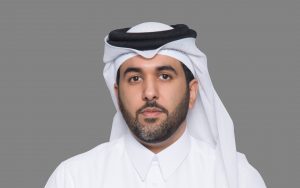
Qatar Green Building Council (QGBC) is a non-profit organisation providing leadership in environmentally sustainable practices for green building design and development in Qatar.
Established in 2009 by Her Highness Sheikha Moza bint Nasser, QGBC is part of Qatar Foundation. Its mission is threefold: to generate awareness, create understanding and initiate education; to develop a clear set of environmental and green building guidelines; and to support and pursue research and development.
Qatar’s National Vision 2030 makes clear that to be sustainable, the country’s development needs must be balanced with the protection and preservation of the environment. To support this, QGBC focuses on a number of areas to raise awareness and build capacity. This includes focusing on technical expertise development, research and development, and sustainability education and training. It works with a range of experts and government stakeholders to increase awareness and knowledge of green building practices, and build the capacity of industry professionals.
Qatar Sustainability Week, which will take place in October-November this year, is a QGBC initiative that serves as a unique platform to promote Qatar’s sustainability vision, as well as allowing for the wider community to engage with those leading the change. It is also an opportunity for stakeholders to showcase their innovative and practical solutions to the environmental challenges faced by Qatar and the wider region.
Few countries have experienced such a dramatic transformation over the past century as Qatar. Once an unknown pearl on the Arabian Peninsula, Qatar has undergone a period of rapid growth and development. Today, Qatar is at a crossroads. Its substantial wealth presents immense opportunities, and also equips it to address some of the future’s most pressing challenges.
Qatar has been blessed with a wealth of natural resources, but we have long recognised the need to build a diverse and sustainable economy, one that is based on knowledge, not carbon fuels. That is why, in October 2008, we launched our Qatar National Vision 2030 (QNV 2030).
QNV 2030’s aim is simple: to “transform Qatar into an advanced country by 2030, capable of sustaining its own development and providing for a high standard of living for all its people for generations to come.” It seeks to build a bridge between the present and the future, and provide a roadmap for successful and sustainable development.
Four pillars underpin this vision: human, social, economic, and environmental.
Human: Qatar recognises that its future success will depend on its citizens. That is why Qatar is establishing modern, world-class education, and health systems. These investments aim to unlock the potential of the next generation of Qatari men and women so they have the skills and knowledge they will need to prosper in the century ahead.
Social: Qatar’s vision is to build a safe, stable, and more equal society. The State will promote tolerance, openness, and humanitarianism, celebrate its national and artistic heritage, and will also seek to empower women to participate fully in the political and economic spheres. At the global level, Qatar will seek to increase international cooperation, and work with its allies to celebrate and enhance religious and cultural exchange and coexistence.
Economic: Qatar’s aims are threefold. First, it will ensure sound economic management to create an attractive business climate. Second, it will ensure that it responsibly exploits its hydrocarbon resources, so that “future generations inherit ample means to meet their aspirations.” Third, Qatar will spearhead a transition towards a knowledge-based economy to remain competitive for generations to come.
Environmental: Finally, Qatar seeks to strike a balance between meeting its development needs and protecting the environment. To do this, the State will build institutions and a legal system that will preserve and protect the environment. This will be underpinned by sustainable policies for urban and infrastructure development. Qatar’s national development plan is more than just a vision. It is the roadmap to guide the country towards a prosperous and sustainable future.
How the Young Qatari Designers Initiative has helped jewellery designer Sara Al Hammadi to realise her dream.
As the bride floated into the ballroom, Sara Al Hammadi was transfixed by the glittering gems that adorned her. The glamorous fairy-tale weddings of Qatar eventually inspired this young designer to set up her own bespoke jewellery company, which now provides women with bridal jewels and much more.
Sara says: “At weddings in Qatar, I watched women enter the ballroom with gorgeous gleaming jewellery. I’ve always seen bridal jewellery like one of Picasso’s well-known artworks. They seem like a mixed-up puzzle with shapes but, at the same time, they all somehow fit so smoothly together in one place.
“I am intrigued by how there can be so much detail in one piece but, on the other hand, it has that gentle delicate feeling.”
Setting up her own company was a dream come true for Sara, allowing her to develop her intricate imaginative designs into delicate works of art. She says: “Since I was a child, I’ve also always loved to draw repeating patterns. These patterns inspired my
jewellery designs and my interest in making bridal jewellery.
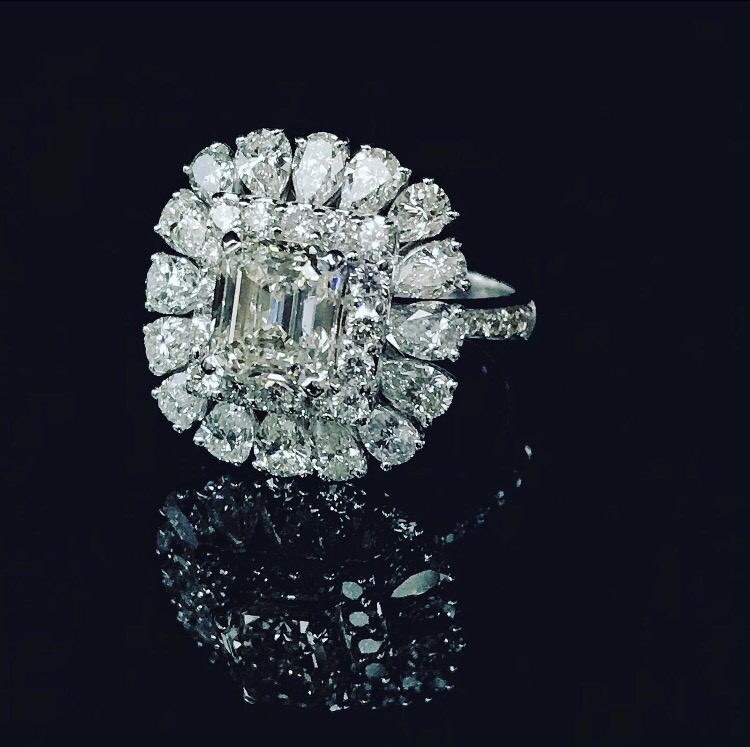
“Sketching abstract shapes came naturally to me, and I always ensured symmetrical motifs were part of the piece. This is what draws attention to my jewellery and makes it stand out. Gradually, I entered a whole new world of design, introducing colours and different precious stones, developing my own unique style.”
Certainly, it is a style that is now much in demand. Since setting up her business, Sarah’s & Co, four years ago, Sara has found that there is a thriving market for her designs. “Most women around the world want to have bridal jewellery laid on their necks and hanging from their ears on their wedding day,” she says.
“I started with simple gold pieces and incorporated a lot of filigree work into my very first designs. Women want to have something special, created just for them to celebrate special moments in their life.”
She noticed that some women were fond of the smaller and simpler pieces, while others favoured the large extravagant eye-catching pieces that she offers, so she has developed both strands of her work.
Her collection now has a classic look, along with some contemporary designs and simpler pieces. The jewellery displays her flair for exotic colours. She says: “I took this step so that all women of all ages have a variety to choose from in my collection.”
There is also much technical expertise involved. Sara has had to learn how to work with rare gemstones and different precious metals, mastering the age-old craft of fine jewellery and acquiring techniques beyond her natural skill in sketching creative designs.
The hard work has evidently paid off. In 2017, she became part of the Young Qatari Designers initiative, allowing her to canvas opinion on her designs from locals and gain national and international recognition for her work. She says: “The scheme aims to motivate more young Qatari women to start their own businesses and use their imagination in creating remarkable artwork and jewellery.
“It was a great opportunity to meet other young Qatari designers, discovering each other’s ideas through their jewellery and swapping our ideas about what is trending now in Doha in terms of jewellery.”
Now, when Sara attends weddings, she often quietly admires her own designs as the bride enters the ballroom and can reflect on her own personal dream come true.
How the Young Qatari Designers Initiative has helped jewellery designer Ghada Al Buainin to grow her business.
How long have you designed jewellery?
Since I was young, I have loved creating and designing things. I designed my first piece of jewellery when I was 21 years old – it was a pipe-in-gold bracelet that I made as part of a summer art project. I was so proud of the piece, and I’ve mostly used gold in my designs ever since.
What does your typical day look like?
I’m always looking for inspiration around me. My Digital Garden collection was inspired by chicken wire that was lying around my bedroom! Most days I visit a nearby hardware store to find ideas. When I find something inspiring, I make a story of the collection or piece of jewellery I plan to design, to help me to create the final designs.
How has the Young Qatari Designers Initiative helped you?
Before joining the Young Qatari Designers Initiative, I struggled to find a retailer that would sell my jewellery in Qatar. I could only sell online or abroad. The initiative gave me the opportunity to showcase my pieces in Qatar for the first time, at the Doha Jewellery and Watches Exhibition in 2017 and 2018, alongside some of the world’s top
brands. This has opened a lot of doors for me.
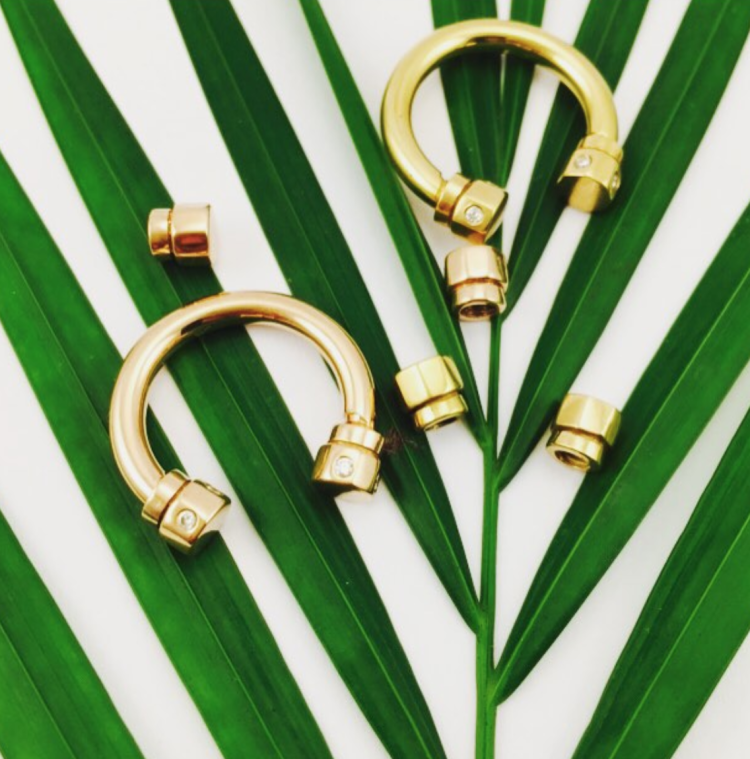
Do jewellery designers in Qatar support each other?
The Young Qatari Designers Initiative has helped to foster a sense of community among jewellery designers here. I’ve met a lot of other designers through the scheme,
and we keep in touch to support each other. It’s been great to meet other designers with different styles, levels of experience and stories to tell.
Do you think Doha is a good city for artists and designers?
Absolutely. Qatar has always supported the arts. One example is the Doha Fire Station, which has been converted to be a residence for upcoming artists. Thanks to programmes like this, each year there are new designers and artists bursting onto the scene.
What has been your biggest challenge?
Starting my business and creating a brand. The first time I showed my jewellery to retailers was at an exhibition in London. I had just designed my first ever piece – the pipe-in-gold bracelet – and had plans to travel to London in summer. A friend recommended that I create a collection and show it off at an exhibition in London, and I did. When I returned from London, I knew that I wanted to start my own business. But I knew it wouldn’t be easy!
How one of Doha’s most popular bloggers keeps foodies informed as she seeks out the city’s diverse eating outlets
Diverse, multicultural, accessible. Those are the three words food blogger Rachel Morris uses to describe Doha, her home of 11 years. As one of Qatar’s most popular food bloggers, Rachel is permanently on the lookout for the newest and most delicious meals that Doha has to offer. Her searches range from luxury hotels to hidden gems tucked away in the city’s souqs, and she describes her findings in her food blog, Life on the Wedge.
Because there are people of so many different nationalities living in Doha, Rachel believes that its restaurants cater for almost every style of cuisine in the world and for every budget. She says: “You can dine around the world in one day – Yemen for breakfast, Italy for lunch and Japan for dinner!”
Rachel started Life on the Wedge as a personal blog about eating and documenting ‘365 cheeses in a very long year’. She enjoyed the creative outlet it provided and, with encouragement from friends, slowly started covering a broader range of food topics.
She was encouraged by the positive responses to her blog: “People really seemed to engage with me,” she says. Instagram and Twitter helped her to find an even bigger
audience to share foodie finds with her fans.
Whatever the platform, Rachel works hard to uncover Doha’s best restaurants. She says that regular and varied content “keeps readers engaged and coming back”.
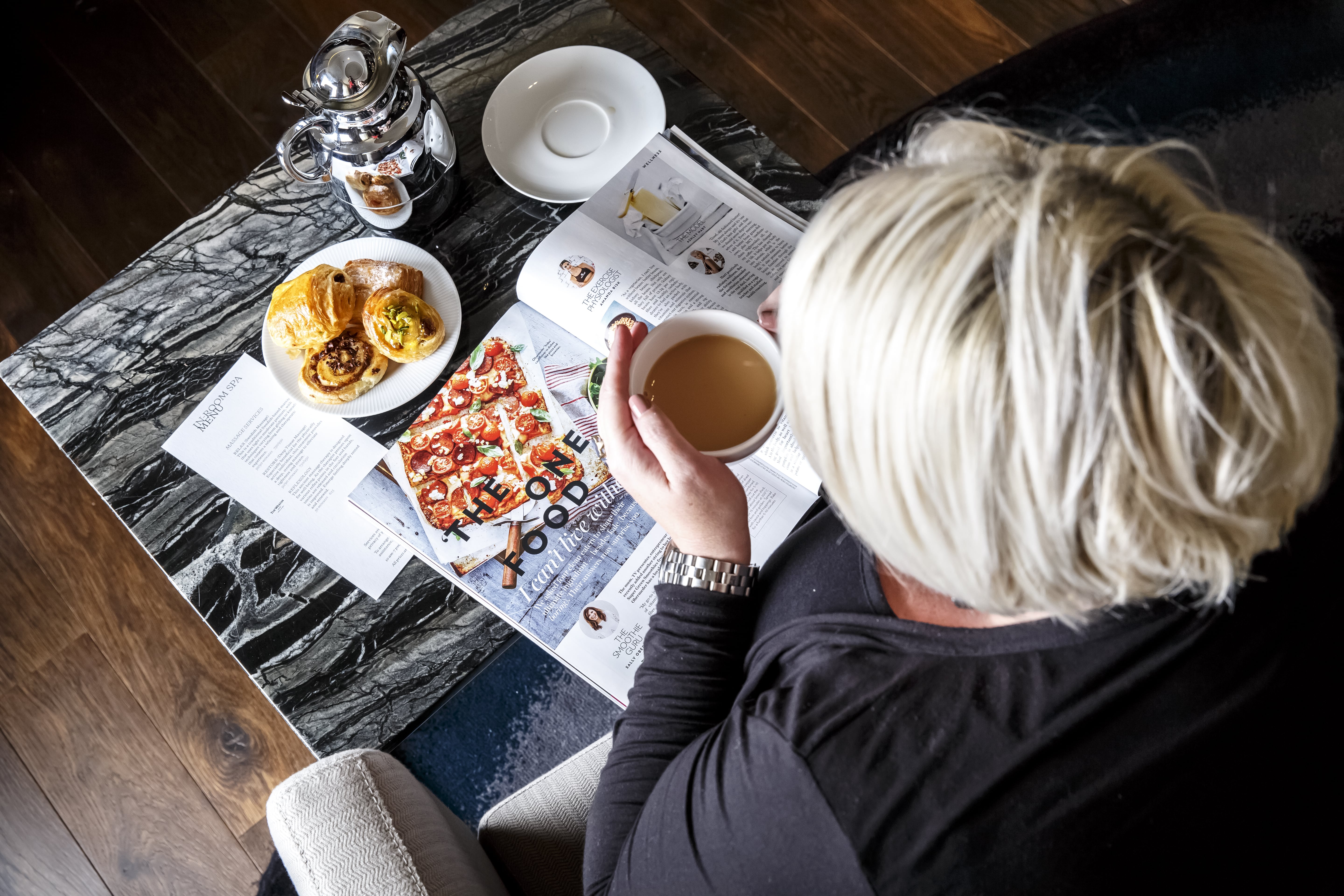 Today, she is one of Doha’s most established ‘influencers’ – a word used to describe people with a large fan base on social media, especially Instagram, who set trends and
Today, she is one of Doha’s most established ‘influencers’ – a word used to describe people with a large fan base on social media, especially Instagram, who set trends and
influence consumer behaviour.
The rise of Instagram and its influencers has, according to Rachel, “transformed how we eat and how we decide where to eat.” Just one Instagram post from her can make or break a restaurant’s reputation in Doha. As such, there are some perks to the job: invitations to restaurant openings, complimentary food and drink, and reservations at the very best tables.
Despite her position as an influencer, Rachel has struggled to be seen on equal terms to food critics writing for traditional newspapers. She says: “I think there is a still a level of scepticism about bloggers and social media generally, and this has made it hard to win over audiences.”
But this hasn’t put her off blogging – and her perseverance has paid off. She says that a big turning point in her blogging career, and one of her proudest moments since starting Life on the Wedge, was when international brands started to take notice of her work.
Last year, Rachel was featured in Qatar Airways’ onboard magazine, Oryx. She says that when she saw the article, “it made me feel that all the hard work was finally paying off.”
Rachel has recently expanded her quest to find the very best eateries outside Qatar’s borders. She says: “Qatar is a gateway and we have so many interesting destinations
within easy reach for a weekend trip.”
Because her fans in Qatar are constantly on the lookout to discover new cuisines, they are enthusiastic about her foodie adventures abroad. She is now just as likely to be
found showcasing food in Sri Lanka, India or Singapore as in Doha. India is a particular favourite: “I love the food and the energy of the country,” says Rachel.
She also sees her blog as a way to connect with people and share her experience of living in Doha. She says: “I love how passionate people are about food here.”
“I also really enjoy the holy month of Ramadan – not just the incredible food, but the family atmosphere and spirit of sharing makes it one of my favourite times of the year.”
These days, Rachel is just as likely to be found with her head buried in a book than eating at the latest new restaurant. “I’ve recently joined Qatar National Library,” she says. “I’ve been able to indulge my inner book nerd – it’s a stunning space, has more than one million books and is a great space to lose myself for a few hours.”
But nothing can keep Rachel away from restaurants for too long. After all, she says: “I do spend a lot of time eating out!
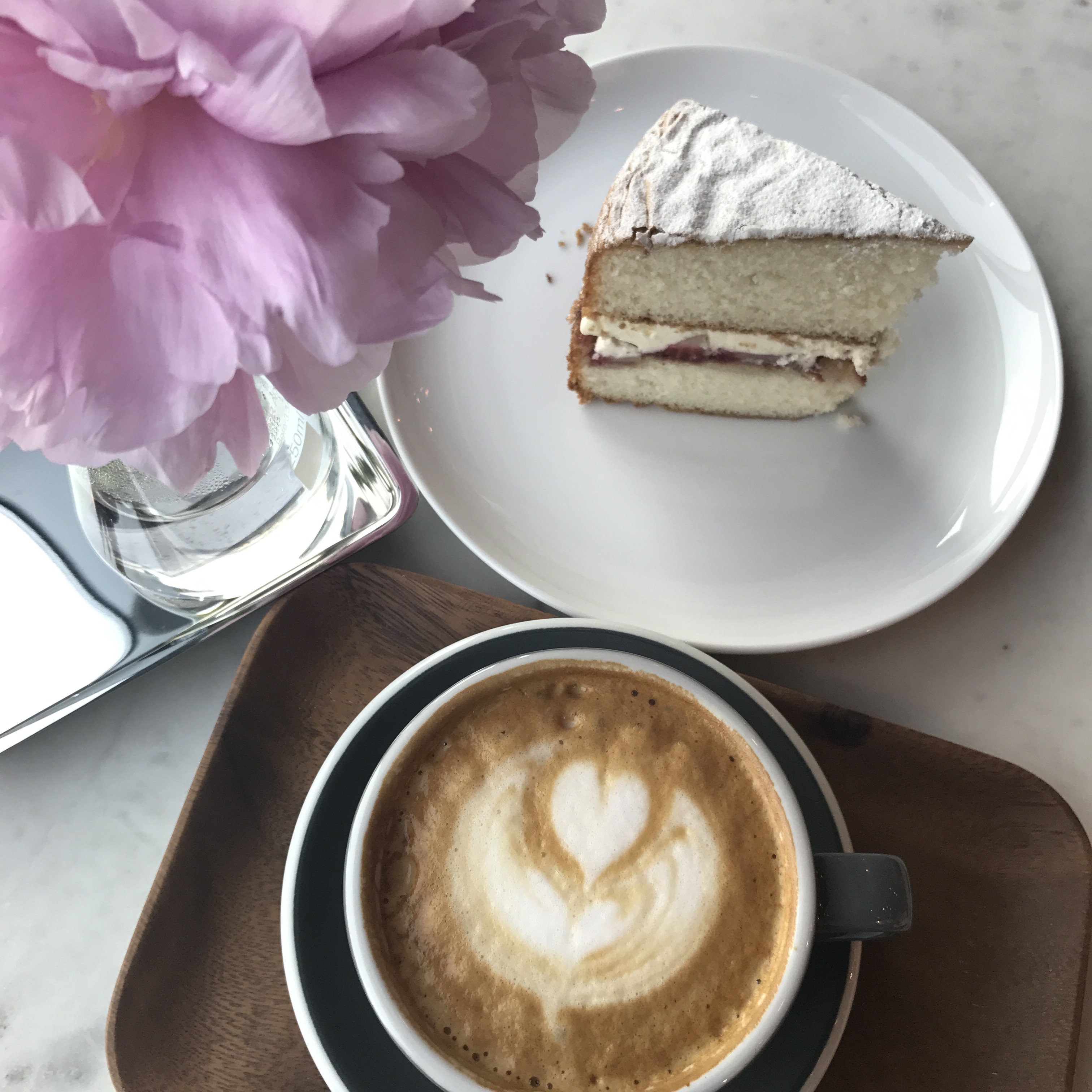
Doha is one of the most exciting places in the world to be an artist. Bouthayna Al Muftah, one of Qatar’s most talented young artists, explains why and how it influences her art.
Tell us about your art
Culture, heritage, folklore and tradition. This is the basis of my artistic expression and subject matter – the themes and dialogue that I have chosen to express through different media to keep my native land’s memories alive for generations to come.
What inspired you to become an artist?
Art was always a hobby of mine. As a young girl, I always enjoyed the experimentation process of arts and crafts, mastering new techniques and learning to take them further in my own way. I always found great comfort in an art class. There was no right or wrong – it allowed me to be myself, as well as find my path to discovering my own identity.
What is your preferred medium and why?
Black ink is my favourite medium and the basis of most of my artwork. I have always loved monochromatic artwork and the combination of the rich black ink pouring onto the crisp white paper. This passion emerged during my years in middle school, as I began learning the techniques of Chinese ink painting and calligraphy. From there, my appreciation for black and white art evolved into what you see today.
You say that Qatar is the main inspiration for your art. Why is this?
Recording and communicating memories through art is my way of staying close to my cultural history. I like to capture glimpses from the past and conceptualise them in a
deconstructed form, while inviting the viewer to reflect on our history.
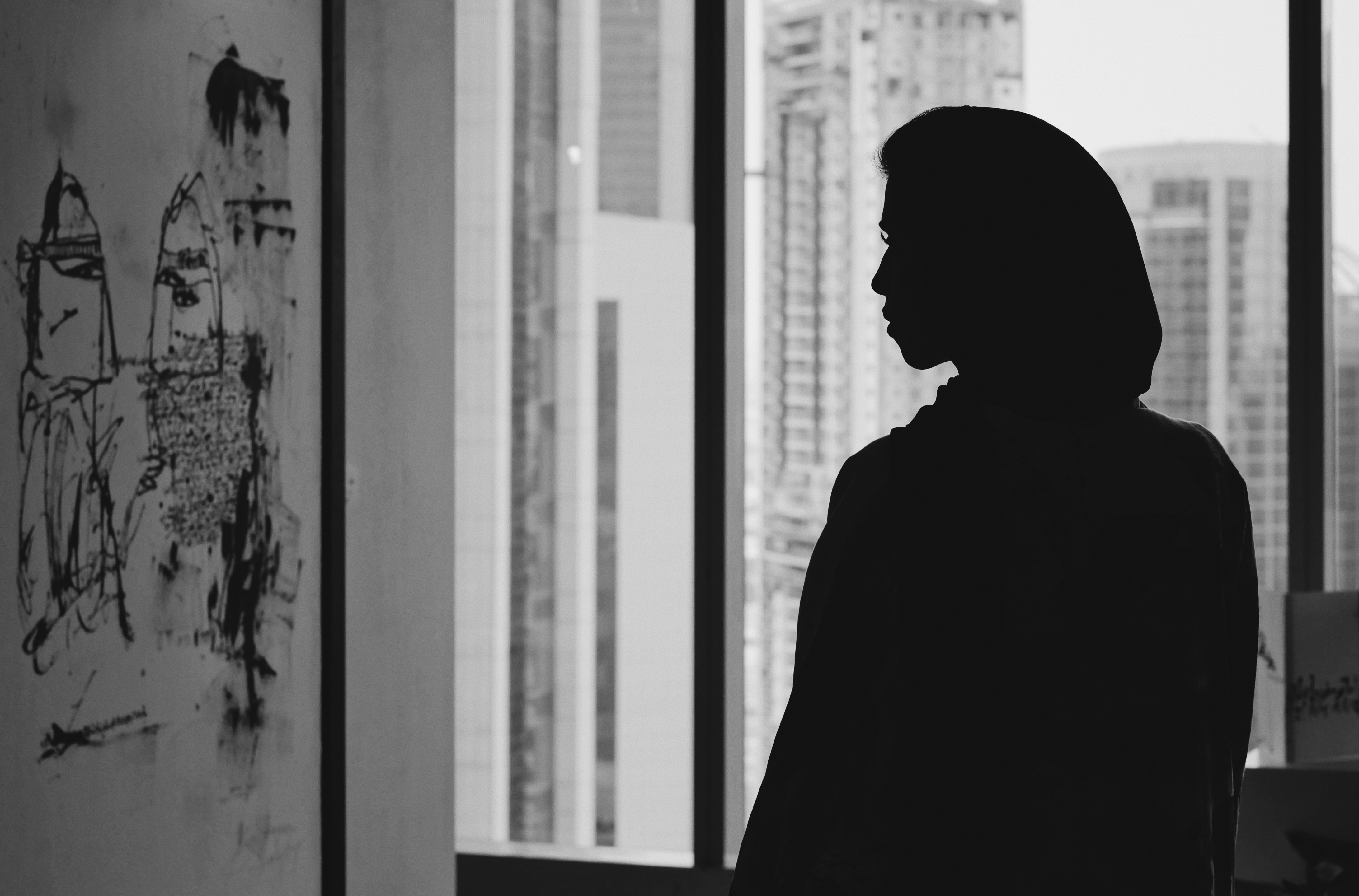
How did it feel to showcase your art in Berlin in 2017?
It was one of the highlights of my artistic career. To have been selected as an exhibitor in Berlin – one of the most influential cities in the arts – was something I had never imagined for myself. It was awe-inspiring to see my work up on display and a true honour.
Do you believe Qatar encourages its artists?
Absolutely. Qatar is fast becoming one of the best places in the world for aspiring young artists, for which we owe much to Her Excellency Sheikha Mayassa bint Hamad bin Khalifa Al Thani, Chairperson of Qatar Museums, for her support and encouragement of the arts. And the support from the artistic community in Doha is an amazing source of inspiration – and motivation!